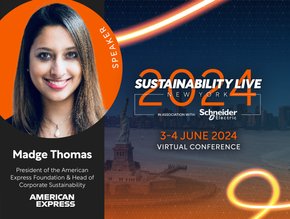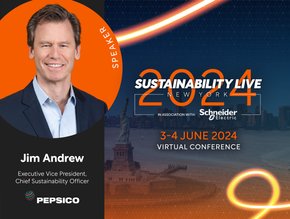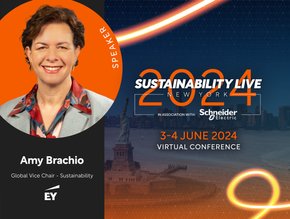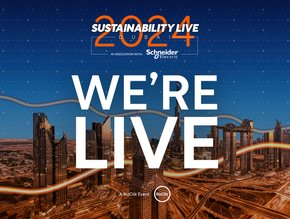Beyond Sustainability: Cisco Takes Regenerative Approach
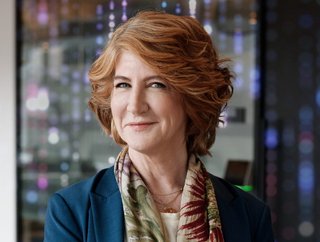
Traditional sustainability is no longer adequate.
While many organisations are committing to sustainability initiatives as part of their ESG strategy, regenerative business describes the need to take this further – to go beyond traditional sustainable practices and have a positive rather than just neutral impact.
Put simply, this means giving more than you take from the system, positively impacting the natural world and society, restoring and rejuvenating ecosystems and communities – moving from net zero to net positive.
For Cisco’s Chief Sustainability Officer Mary de Wysocki, regeneration means “moving beyond a ‘doing no harm’ mindset to one in which we build the capacity [and] our social and environmental systems to heal and thrive”.
And this is the strategy the global technology and networking solutions provider is taking in its approach to the future.
As a global tech leader with more than 83,000 employees across 95 countries, it is critical for Cisco to operate in a way that protects human rights, facilitates diversity and equitable opportunity, protects the planet, and empower vulnerable communities.
Last July, having recently been installed as Cisco’s first-ever CSO, de Wysocki laid out the company’s mission for building a regenerative future – one that is inclusive, resilient, and possible to achieve.
“We must build a sustainable future in which we phase out our reliance on fossil fuels, address centuries’ worth of pollution, provide economic opportunities to communities around the world, and align our activities within the physical boundaries of our Earth.
“We’re focusing on not just a sustainable future, but a regenerative one,” de Wysocki said.
Cisco’s Plan for Possible – the regenerative approach
Aptly titled the Plan for Possible, Cisco’s ambitious and comprehensive environmental strategy is a top-down global initiative comprising three stages.
The first stage is to accelerate clean energy adoption and net zero emissions ambitions, with a goal to be net zero across all scopes by 2040. Then comes stage two, a regenerative, circular model of doing business, before finally scaling efforts to foster an inclusive future and a healthier planet – made possible by investment in resilient ecosystems.
The plan includes how the company operates its business, how it engages with suppliers, and how it helps customers and communities reduce their environmental impacts.
And as a long-established leader in networking, Cisco is tapping its own technology to achieve this.
Since its founding in 1984, Cisco has helped power the world’s connectivity and accelerate the transition to the digital age. Its software and solutions protect the data of millions of users within public sector organisations and businesses of all sizes and it is long-committed to making its products and solutions responsibly.
“With Cisco technology, we are helping power the world with affordable clean energy through digitising smart grids and smart buildings, we are designing out waste by re-building products from used ones, and we are using the Internet of Things (IoT) to protect the world's biodiversity,” de Wysocki says.
Transition to clean energy
Among the first technology hardware and equipment company to have its net-zero goal validated under the SBTi standard, Cisco plans to reach net zero across its entire value chain by 2040, including suppliers and customers’ energy use.
And its priority is the transition to clean energy.
Having already made major gains in Scope 1 and 2 greenhouse gas reduction goals in the last 15 years, achieving a 48% absolute reduction as of FY23 – just 1% of the company’s emissions now fall under Scopes 1 and 2, with the remaining 99% from upstream and downstream activities, like purchased goods and emissions from use of Cisco products.
Along with innovation in energy efficiency, Cisco is powering the world with affordable clean energy, digitising smart grids and smart buildings and working with customers, partners and suppliers to accelerate the energy transition – using its technology to rethink operating and business models in ways that are digital and low carbon.
“As we work towards our net zero goals, our technologies such as IoT, Silicon One and power over ethernet, are helping our customers on their own sustainability journeys by enabling significant reductions in power consumption,” Chuck Robbins, CEO, said in Cisco’s 2023 Annual Report.
Already, Cisco is enabling emissions cuts from customer product use with the Cisco 8201 router. When equipped with carbon-saving chips Silicon One, Cisco’s networking device for AI processing, not only is 96% less energy consumed but 35% more bandwidth if provided.
What’s more, Cisco’s pioneering Universal Power Over Ethernet (PoE) is optimising energy use for smart buildings. The company is also partnering to digitise Enel Group’s grid through smarter networks and helping its supply chain set GHG reduction targets.

Cisco’s circular economy principles
Along with the energy transition, Cisco is focused on evolving its business to circular, extending the useful life of its products and re-building products from used ones.
Championing a digital, nature-positive value chain, Cisco is already on track to incorporate circular design principles into 100% of new products and packaging by FY2025 with 27% of products and packaging currently meeting circular design criteria, as of FY2023.
Adding to this, the company has unveiled a number of programmes that enable circularity in its value chain, including:
- Cisco Takeback and Reuse Programme – this allows customers to return hardware that has reached end-of-use at no cost
- Green Pay – launched in 2022, this circular IT payment solution removes hardware acquisition costs and offers five-year payments and an incentive of 5%. This programmes sees Cisco recover products free of charge, to be reused and recycled. It accelerates its commitment to 100% product return and supports
- Cisco Refresh – a programme that re-manufactures devices to give them a new lease of life. Remanufactured saves up to 98% o co2 emissions compared to equivalent products.
Building resilient ecosystems
Enabling communities to adapt to climate realities is also a priority for Cisco, which has a presence in nearly 100 countries.
To achieve this, the company is committed to investing in regenerative solutions, from cultivating talent for the regenerative economy, to leveraging technology to protect and restore ecosystems.
“It’s important to recognise that our value chain benefits from really resilient ecosystems, both financially and ecologically,” de Wysocki says.
Cisco does this through its Foundation, which has committed US$100 million in investment over a decade in climate solutions to slash carbon emissions as well as help improve communities and regenerate depleted ecosystems.
Among recipients, Vibrant Planet is creating sophisticated, cloud-based data visualisation tools to facilitate faster and better-coordinated land management, fire prevention and forest restoration projects – tactics that are vital to mitigating the impact of climate change-fuelled wildfires on people, communities and the environment.
Nia Tero is another funding recipient with its initiative to train Indigenous community members as technicians who build, operate, and maintain solar electric shuttle boats in rainforest communities. These boats can reduce deforestation by removing the need to create roads, while creating economic opportunity for community members.


